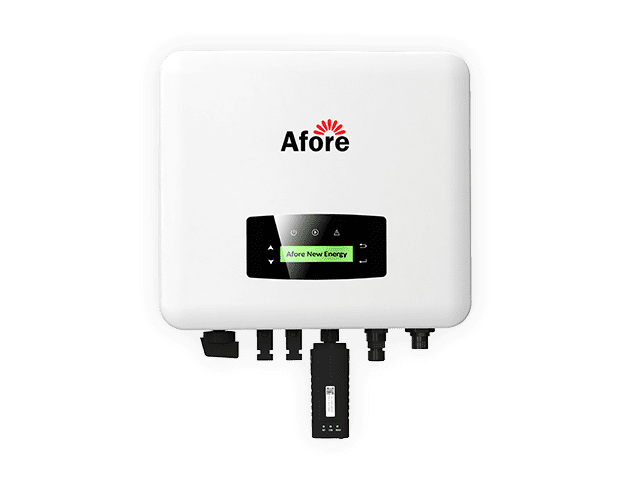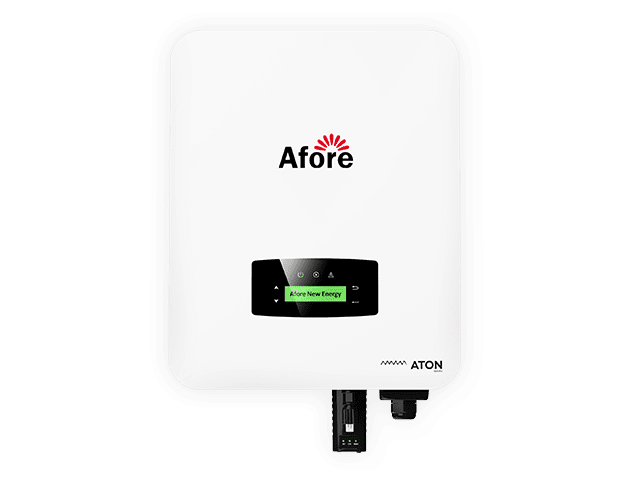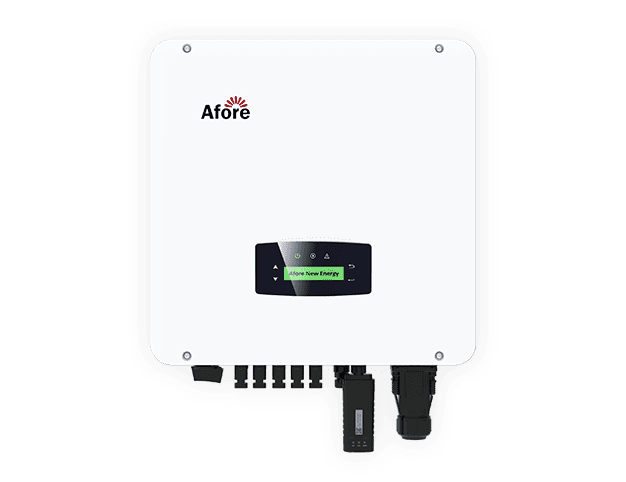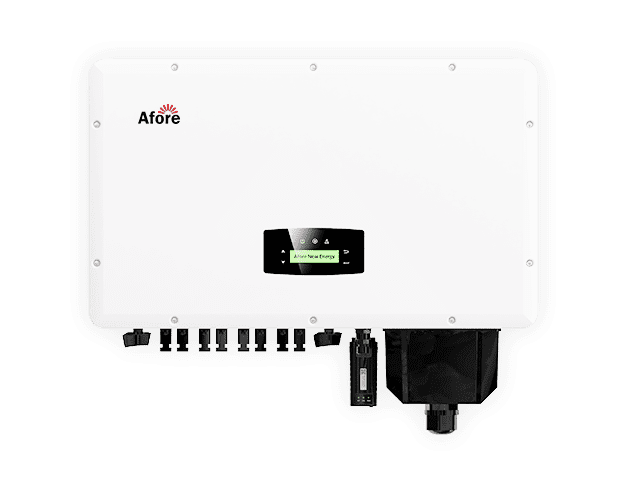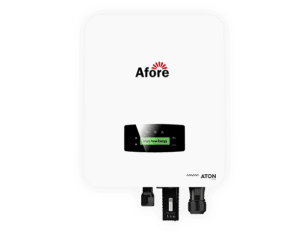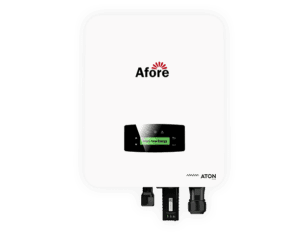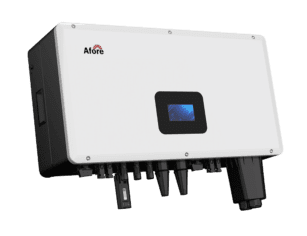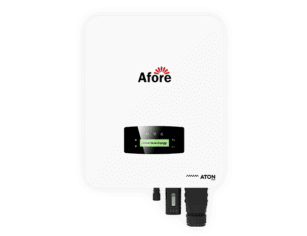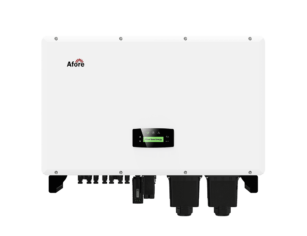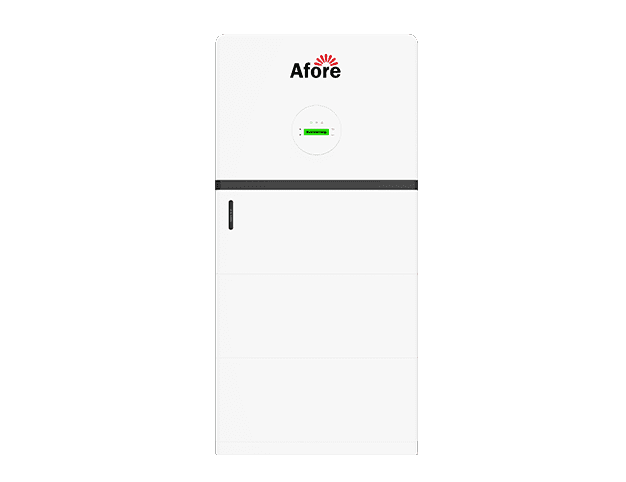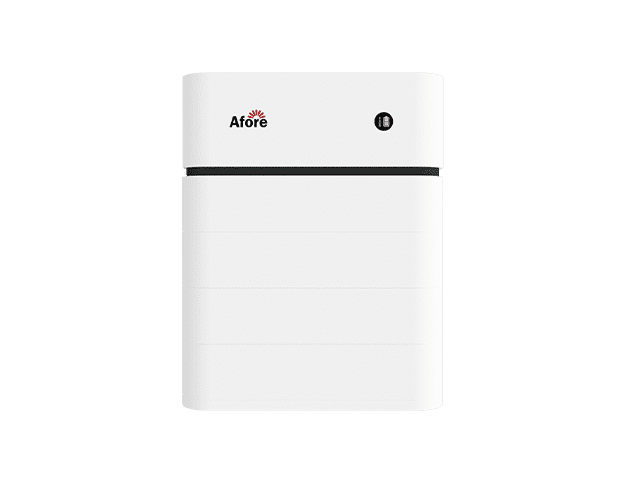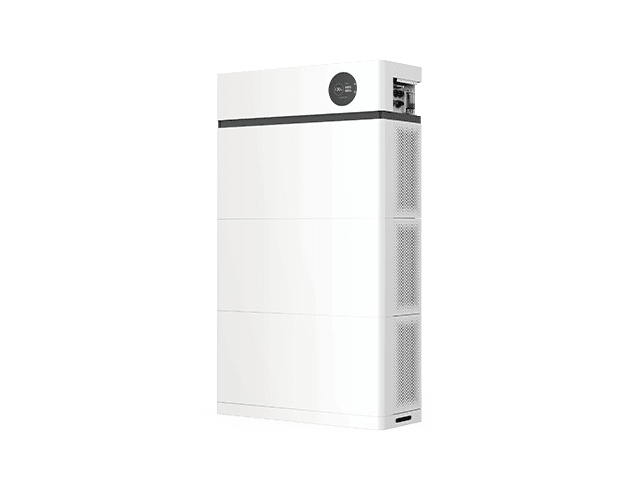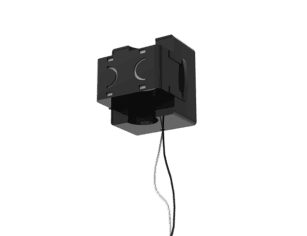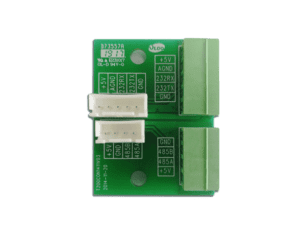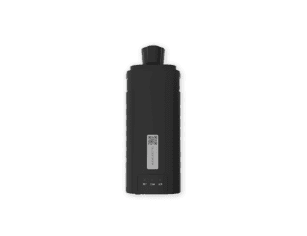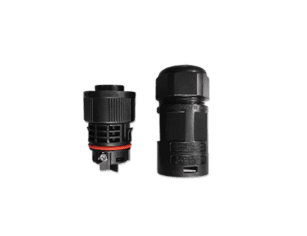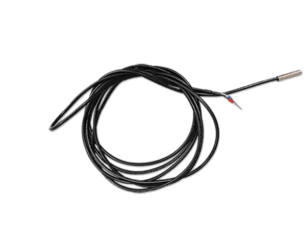Smart Energy Freedom with a Reliable Solar Battery Backup System
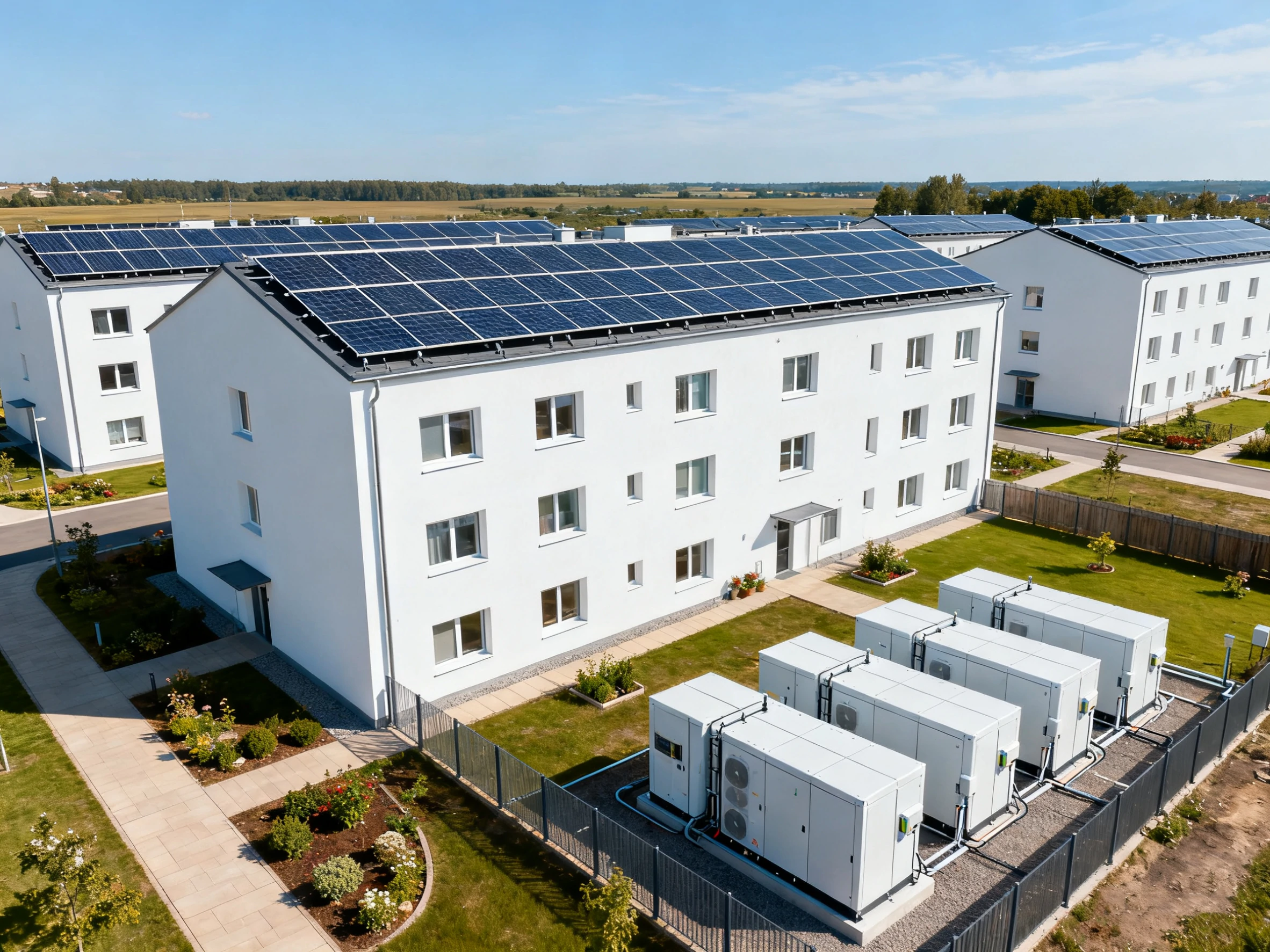
Índice
If you’re reading this, you’ve probably heard the term solar battery backup system and wondered whether it’s the right move for your home. You may also have heard about a solar inverter, and asked: how do these two work together? I’m going to walk you through everything—from how the technology works, to the benefits, to things you should check—so that by the end you’ll feel confident whether a solar battery backup system is a smart investment for you.
What is a Solar Battery Backup System?
Definition and basic components
A solar battery backup system is essentially a home-energy storage solution that works alongside your solar panels. The core idea: when your panels generate more electricity than your home uses, instead of sending all that surplus to the grid, you store it in a battery for later. Then, when the sun isn’t shining—or in the event of a grid outage—the stored energy can power your home. That’s the essence of a solar battery backup system.
In this system you’ll typically find three main components:
- Solar panels (often already installed) that generate DC power from sunlight.
- A solar inverter that converts that DC into AC (which your home uses).
- A battery (or battery bank) designed to store excess energy for later use.
Why homeowners consider adding battery backup
There are several compelling reasons homeowners choose to install a solar battery backup system. First, resilience: power outages happen, and anyone with a solar-plus-storage setup can stay powered when the grid goes down. Second, self-consumption: you use more of what your solar panels produce, rather than exporting it at low value. Third, energy independence: less reliance on the utility grid means more control. And finally, for many people it’s about future-proofing the home and enhancing its value.
How it differs from a “normal” grid-tied solar panel system
Here’s a key distinction. A typical grid-tied solar system (without a battery) works fine when the grid is up: your panels produce, you use, you may export excess. But in most of those systems, if the grid goes down, your solar production is shut off (for safety reasons) and you stay in the dark unless you have battery backup. Installing a solar battery backup system changes that: your solar inverter must be backup-capable, and the system must allow islanding (disconnecting from the grid) so you can keep the lights. In short: battery + compatible inverter = backup; without them you don’t get full resilience.
Key Components — Solar Panels, Solar Inverter & Battery
Building a reliable solar battery backup system starts with understanding its three essential components: solar panels, a solar inverter, and the battery bank itself. Each of these elements works together to convert sunlight into usable power, store excess energy, and deliver electricity when you need it most — especially during grid outages or at night.
Solar Panels — The Foundation of Your Energy Production
At the core of every solar battery backup system are the solar panels. They capture sunlight and convert it into direct current (DC) electricity. The more efficient your panels are, the more energy you can generate throughout the day. Modern panels are designed to perform well even under partial shade or cloudy conditions, ensuring consistent energy generation.
However, the panels alone can’t power your home — they need the help of a solar inverter and a battery to make that energy usable and storable. Think of solar panels as the “energy harvesters” that start the clean-power process.
Solar Inverter — The Heart That Converts Energy
O inversor solar is often called the heart of a solar battery backup system. Its main job is to transform the DC electricity from your solar panels into alternating current (AC) — the type of power your home appliances use.
Beyond conversion, modern inverters also play an intelligent management role: they monitor power flows, optimize energy production, and coordinate how much electricity is sent to the grid, stored in the battery, or consumed by your home.
There are different types of solar inverters, such as string inverters, microinverters, and hybrid inverters. Inversores híbridos are particularly relevant for battery systems because they combine energy conversion with battery control, allowing seamless switching between grid and stored power during outages.
Battery Storage — The Core of Energy Independence
The battery is the component that transforms a simple solar array into a full solar battery backup system. It stores the excess energy your panels produce during the day for later use — at night, during cloudy weather, or when the grid fails.
Modern batteries rely on advanced lithium-ion or lithium-iron-phosphate (LFP) chemistry, offering longer life spans, deeper discharge rates, and improved safety compared to older technologies. The capacity of your battery determines how much power you can access during an outage and how self-sufficient your system can be.
An optimized setup ensures that your solar inverter and battery communicate efficiently, automatically prioritizing stored energy when needed and recharging as soon as the sun returns.
Why Integration Matters
For a solar battery backup system to operate smoothly, all three components — panels, solar inverter, and battery — must be properly sized and synchronized. An underpowered inverter can limit your system’s efficiency, while a mismatched battery can cause energy loss or shorter backup times.
When designed and installed correctly, the system works as a seamless unit: panels feed energy into the inverter, the inverter powers your home and charges the battery, and the battery steps in when solar production drops or the grid goes down.
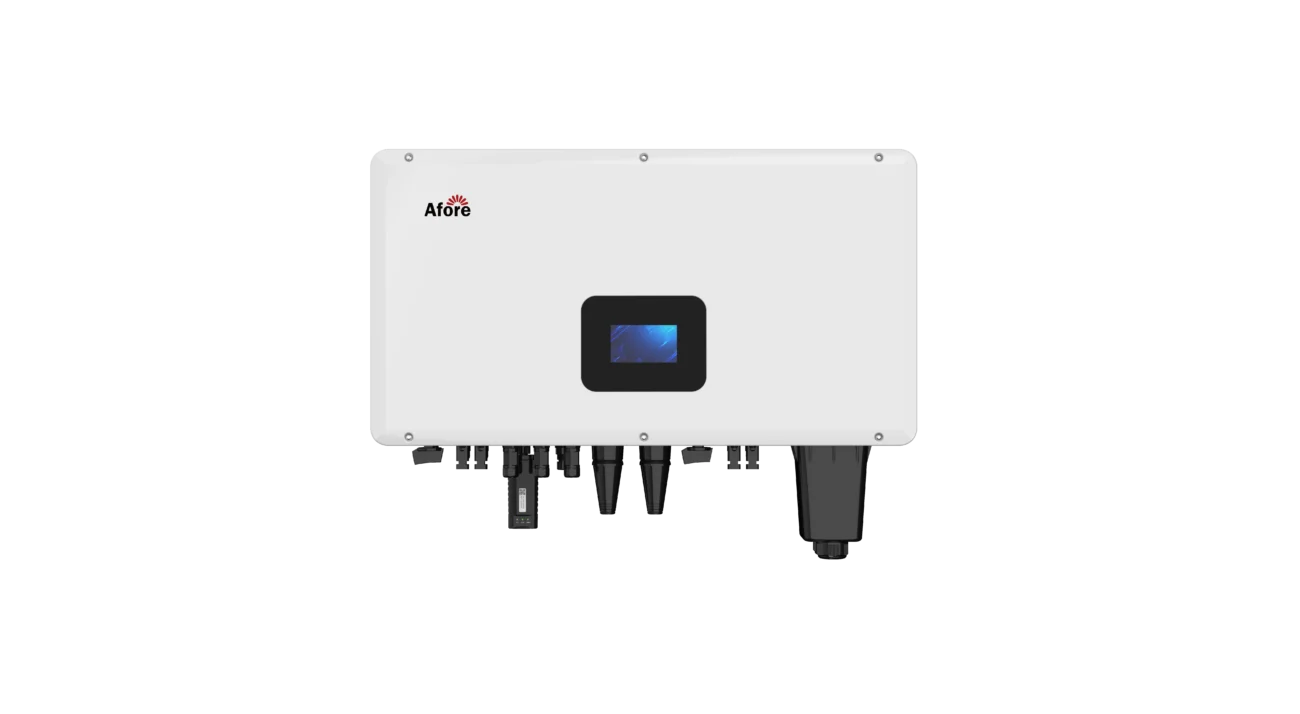
Benefits of Installing a Solar Battery Backup System
Investing in a solar battery backup system is more than just an upgrade to your home — it’s a long-term commitment to energy independence, security, and sustainability. As electricity prices rise and grid reliability becomes uncertain, homeowners are turning to solar energy storage for greater control over their power and peace of mind. Let’s explore the major advantages that come with adding this technology to your home.
1. Reliable Power During Outages
One of the most immediate benefits of a solar battery backup system is protection against unexpected blackouts. When storms, grid failures, or maintenance interruptions occur, the system automatically powers your home using stored solar energy. Unlike traditional generators, this solution operates silently, without fuel, and switches over almost instantly — ensuring your essential appliances, lights, and devices stay on.
The combination of solar panels, a solar inverter, and a battery bank creates a closed-loop energy source that keeps your household running smoothly even when the grid goes down.
2. Energy Independence and Self-Sufficiency
A solar battery backup system allows you to produce, store, and use your own power — reducing or even eliminating your reliance on the public grid. This independence means you can manage your energy based on your needs rather than utility company schedules or rate changes.
By pairing your solar array with an efficient solar inverter and a high-capacity battery, you can maximize the energy you capture during the day and use it at night or during peak demand hours. That independence brings not only cost savings but also a deep sense of control over your home’s energy future.
3. Lower Energy Bills and Smarter Consumption
With a solar battery backup system, you can store excess solar energy generated during the day and use it when electricity prices are highest. This process, known as load shifting, helps homeowners cut down on expensive peak-hour utility rates.
Your solar inverter intelligently manages the flow of energy, ensuring that you consume stored solar power first before drawing from the grid. Over time, this leads to significant savings and a faster return on your investment.
4. Sustentabilidade ambiental
Every solar battery backup system contributes to a cleaner, greener planet. By using stored solar energy rather than fossil-fuel-generated electricity, homeowners drastically reduce their carbon footprint.
Unlike generators that release harmful emissions, battery-based systems produce zero on-site pollution. The result is a quiet, maintenance-free way to power your home while actively supporting renewable energy goals.
5. Increased Home Value and Market Appeal
Homes equipped with a solar battery backup system often stand out in the housing market. Buyers are increasingly attracted to properties with built-in renewable energy systems because they offer lower utility costs, energy reliability, and environmental benefits.
Additionally, as energy resilience becomes a key selling point in many regions, having a solar-powered backup can increase your property’s resale value and overall market competitiveness.
6. Protection Against Rising Utility Costs
Electricity rates have been steadily climbing for years, and there’s no sign of that slowing down. A solar battery backup system acts as a safeguard against these increases. By generating and storing your own energy, you can lock in lower, predictable electricity costs.
Your solar inverter helps optimize this process by balancing how much energy is stored, used, or exported to the grid — ensuring maximum efficiency and long-term savings.
7. Seamless Integration with Smart Home Systems
Modern solar battery backup systems can be integrated with smart home technologies that track real-time energy usage, battery levels, and power flows. This not only provides insight into how your home uses electricity but also allows you to fine-tune your consumption for maximum efficiency.
Paired with an advanced solar inverter, this integration can create an automated energy ecosystem that adapts to your habits, weather patterns, and power needs — making your home more intelligent and sustainable.
8. Quiet, Low-Maintenance Operation
Unlike traditional gas or diesel generators, a solar battery backup system runs silently and requires minimal maintenance. There are no moving parts to replace, no fuel to store, and no exhaust fumes to worry about.
The solar inverter and battery management systems handle energy transitions automatically, giving you reliable power with virtually no intervention — perfect for homeowners seeking a simple yet powerful backup solution.
9. Greater Grid Stability and Community Impact
When multiple homes use solar battery backup systems, they collectively help stabilize the grid by reducing peak demand and feeding surplus energy back when it’s most needed. This distributed approach to energy management makes local power systems more resilient and less prone to large-scale outages.
Homeowners who invest in this technology aren’t just protecting their own households — they’re contributing to a broader shift toward decentralized, renewable energy.
10. Peace of Mind for Every Season
Ultimately, a solar battery backup system offers one of the most valuable benefits of all: peace of mind. Whether it’s a stormy night, a heatwave, or a sudden blackout, your energy supply remains steady and reliable.
With an efficient solar inverter coordinating the flow of energy between your panels, battery, and home, you can rest easy knowing that your power needs are always covered — sustainably and affordably.

What to Consider Before Adding a Battery Backup System
Before investing in a solar battery backup system, it’s essential to evaluate a few key factors that determine whether it’s the right fit for your home and lifestyle. While the benefits of energy storage are undeniable, a well-informed approach ensures your system performs efficiently, safely, and economically over the long term. Here’s what every homeowner should think about before adding a solar battery setup to their existing or new solar power system.
1. Your Energy Usage and Backup Goals
Start by assessing how much energy your household typically consumes and what you expect from a solar battery backup system. Are you looking for full-home backup during outages, or just enough to power essentials like lighting, refrigeration, and communication devices?
Your answer determines the size and capacity of the battery you’ll need. If you have high daily energy demands or want complete independence from the grid, a larger battery bank paired with an efficient solar inverter may be ideal. For partial backup, smaller storage capacity might suffice, offering a cost-effective way to stay powered during short outages.
2. Compatibility with Your Existing Solar System
If you already have solar panels installed, check whether your system is compatible with battery storage. Some older installations may require an upgraded solar inverter or additional components to integrate with modern battery technologies.
Hybrid or battery-ready inverters simplify this process, allowing solar and storage to communicate seamlessly. A proper compatibility check ensures your solar battery backup system performs efficiently and safely without unnecessary upgrades or rewiring.
3. Battery Size, Capacity, and Chemistry
Choosing the right battery involves more than just picking the biggest one available. You’ll want to understand its capacity (how much energy it can store) and power rating (how much energy it can deliver at once). These metrics determine how long your home can run on stored energy during an outage.
Modern batteries for solar battery backup systems often use lithium-ion or lithium iron phosphate (LFP) technology due to their high efficiency, long lifespan, and safety. It’s also important to match the battery’s voltage and capacity with your solar inverter to ensure smooth operation.
4. Installation Space and Location
Battery systems require proper installation space — ideally in a cool, dry, and well-ventilated area. Garages, utility rooms, or shaded exterior walls are common options. The installation site should be easily accessible for maintenance while staying protected from direct sunlight or extreme temperatures.
When planning your solar battery backup system, also consider the placement of your solar inverter, since it needs to be close enough to the battery to reduce energy loss during transmission.
5. Local Regulations and Permits
Adding a solar battery backup system often requires adherence to local electrical codes, safety standards, and sometimes even utility company approval. Some areas may offer incentives, rebates, or tax credits for solar energy storage, while others may have restrictions on grid-tied battery setups.
Checking local regulations before installation prevents costly delays and ensures your system is fully compliant. It’s always a good idea to consult with licensed professionals familiar with renewable energy permitting in your region.
6. System Sizing and Cost Considerations
Cost is one of the most important factors when planning a solar battery backup system. Prices vary based on the battery’s capacity, chemistry, and brand, as well as the complexity of your installation.
In many cases, the most cost-effective approach is to start with a system that meets your essential energy needs, then expand later as your budget allows. A correctly sized solar inverter will make scaling easier, enabling future battery additions without major rewiring or replacements.
7. Maintenance and Lifespan Expectations
A well-designed solar battery backup system requires very little maintenance, but understanding its lifespan helps set realistic expectations. Most modern lithium-based batteries last between 10 and 15 years, depending on usage patterns and environmental conditions.
The solar inverter should also be maintained periodically to ensure optimal energy conversion and monitoring. Keeping both components clean and well-ventilated extends performance and overall reliability.
8. Power Management and System Monitoring
Many modern systems include smart monitoring tools that allow homeowners to track energy generation, storage levels, and usage in real time. This visibility is crucial for optimizing your solar battery backup system and adjusting habits to improve efficiency.
The solar inverter plays a key role in this process by managing how energy flows between the panels, battery, and home — ensuring your stored energy is used wisely and never wasted.
9. Weather and Geographic Considerations
Your region’s climate can influence how your solar battery backup system performs. Areas with frequent cloudy days or long winters might require additional battery capacity or a more powerful solar inverter to maintain consistent energy supply.
Meanwhile, in hot climates, proper ventilation and thermal management become critical for protecting the battery’s health and longevity.
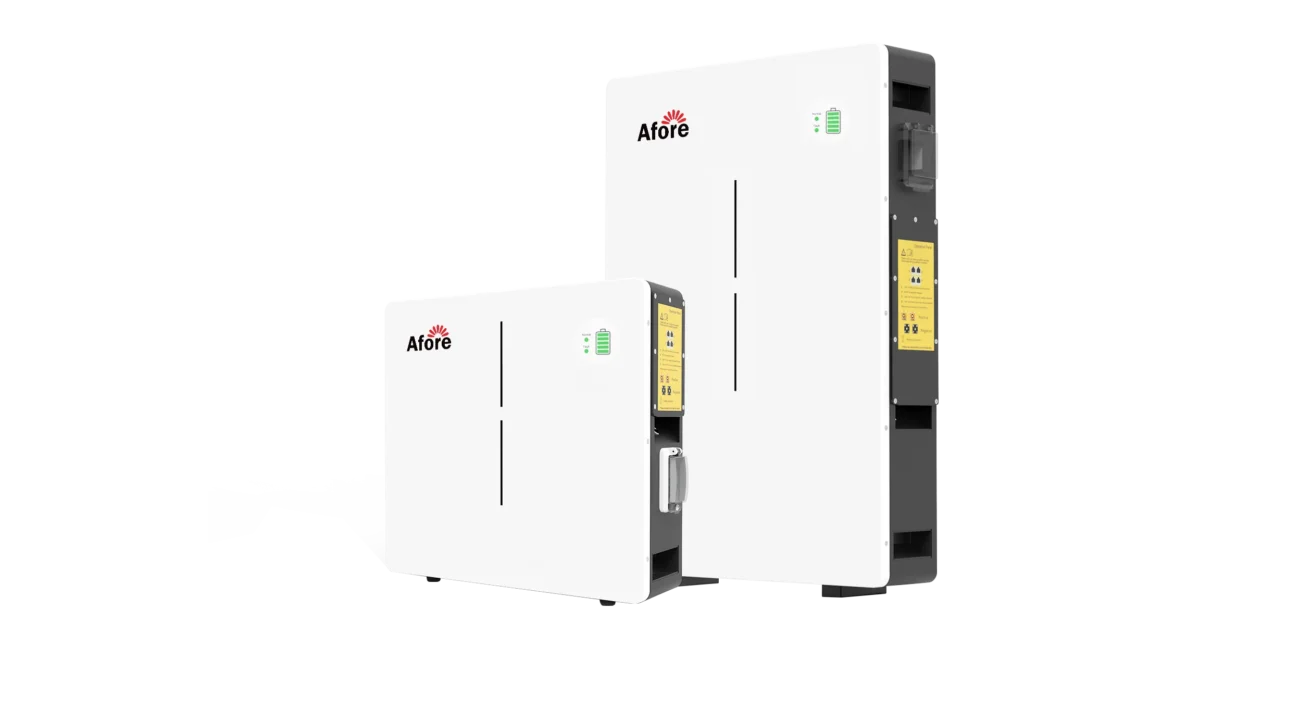
How the System Works: Step-by-Step
Daytime: Solar generation and battery charging
During the day, your solar panels generate DC power. That DC goes into your solar inverter and is converted to AC. Your home uses that power for lights, appliances, HVAC etc. If your generation exceeds your usage, the surplus flows into your battery (via your solar inverter or a dedicated battery charger). So the battery is charged by your solar energy, not just by the grid.
Evening/Night: Using stored energy
Once the sun goes down and panels no longer produce, your home draws power. At that point your solar battery backup system kicks in: the battery discharges, the solar inverter converts the battery’s DC output to AC, and your home continues operating off stored solar energy. This is especially useful if your utility rates are higher in the evening (time-of-use optimization).
Outage Mode: Backup operation
In the event of a grid failure, your solar battery backup system switches into backup mode. The solar inverter (if backup-capable) disconnects from the grid (for safety) and supplies power from the battery (and panels if sunlight is available) to selected loads or your whole home. That’s the real “backup” benefit: continued operation when the utility grid is down.
Load prioritization and management
Since your battery capacity is finite (unless you oversize), it pays to prioritise which loads you back up. Many homeowners set up a “critical loads” panel: fridge, lights, communications. The solar battery backup system often has monitoring/control features so you can see consumption, battery state-of-charge, and manage usage. Smart load management improves the system’s utility and lifespan.
Integration with Solar Inverter: What You Need to Know
Inverter types: string, micro-inverter, hybrid
Getting to know the kinds of solar inverters is important. A string inverter manages many panels in one “string.” A micro-inverter is installed per panel (more expensive but often better for shading). A hybrid inverter integrates solar production + battery storage + backup capability. Each has pros/cons.
Hybrid inverters & DC coupling vs AC coupling
When you integrate a battery into your solar system, you’ll encounter two common coupling methods: DC coupling and AC coupling. With DC coupling, the solar panels and battery share a common DC bus (before the inverter). With AC coupling, the solar panels feed via the inverter, the battery has its own inverter, then both feed the AC loads. The right solar inverter for your system must support the chosen coupling and backup mode. This affects efficiency, cost, and complexity.
Backup-capable inverter and interface requirements
Simply having a solar inverter is not enough—you need one that supports battery charging/discharging and automatic switching to backup mode. That means your solar inverter (or a separate device) must detect grid failure, disconnect safely, manage the battery, and power your home loads. If your system lacks this, your battery might just serve self-consumption and offer no real resilience. The inverter becomes the linchpin of your solar battery backup system.
Monitoring and system integration
Modern solar inverters often include monitoring, firmware updates, remote diagnostics, and smart integration with batteries and home energy systems. When you pick your solar inverter, look for those features—they translate into long-term performance, reliability and trust. The more seamless the integration of solar panels, battery, inverter and backup interface, the better your system will function.
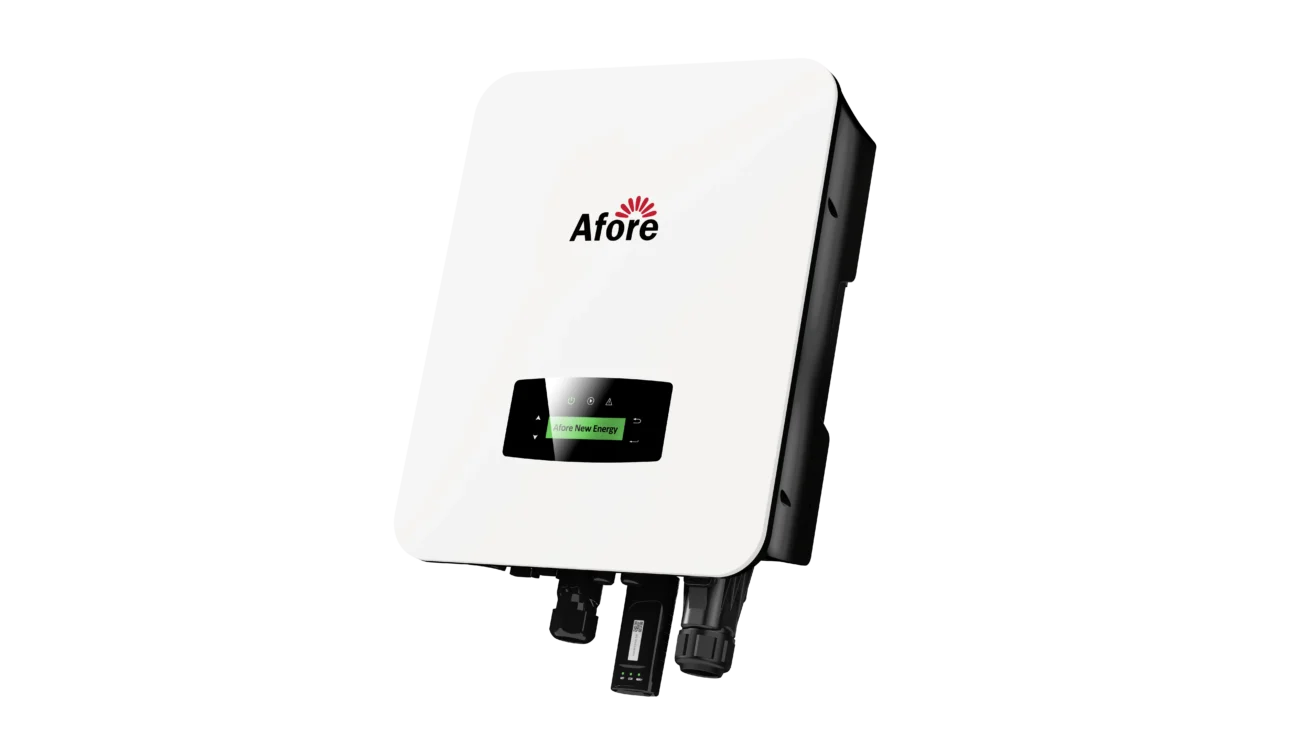
Pros and Cons: A Balanced View
Prós
- Resilience: During outages, you’re powered.
- Energy independence: You consume more of what you generate.
- Smart usage & load management: Optimize consumption, possibly lower bills.
- Environmental benefit: Less reliance on grid, lower carbon emissions.
- Future-proofing: Prepares home for EV integration, smart home, grid interacting roles.
Contras
- Up-front cost: A solar battery backup system adds expense (battery + inverter + install).
- Payback may be long: In areas with favorable net-metering and few outages, cost savings may be modest.
- Technology complexity: More components = more potential points of failure or maintenance.
- Battery degradation: Over time capacity drops, replacement may be required.
- Sizing and expectation mismatch: If you size for full-home backup but power outages are rare, you may not use that capacity fully.
Decision factors: When it makes sense
A solar battery backup system tends to make sense when: you live in an area with frequent power outages, you have time-of-use rates or weak net-metering (so self-consumption matters), you want independence, and you already have (or plan) a strong solar panel + inverter base. It may make less sense if you have full retail net-metering, very low electricity rates, and very rare outages. The decision hinges on energy economics, resilience needs and compatibility of your solar inverter and battery setup.
Case Study / Real-World Example
Example system
Imagine a home with 8 kW of solar panels installed. That system includes a battery storage of 10 kWh and a solar inverter rated for backup. During sunny days the panels generate ~30 kWh; the home uses 20 kWh and stores 10 kWh in the battery. In the evening, the home draws 15 kWh: 10 kWh from the battery, 5 kWh from the grid. Next day happens as usual. One evening a storm knocks out the grid: the solar battery backup system kicks in and powers the essential loads overnight, discharging the battery gradually and using any residual solar generation until grid power returns.
Typical sizing scenario
If your average household consumes ~25 kWh/day, and you want a battery backup to cover the evening + a small portion of next day until solar kicks in, you may size the battery to ~10-15 kWh and pick a solar inverter capable of delivering the required load (say 5-7 kW). If you want full-home backup for 24 hours, you may need ~30+ kWh battery plus a robust inverter.
Financial snapshot (illustrative)
Let’s assume the battery and backup interface cost $8,000, plus installation $2,000 and solar inverter upgrade $1,000 = total $11,000. If your average electricity rate is $0.25/kWh, and you can avoid buying 5,000 kWh/year because of better self-consumption + backup (worth ~$1,250), the simple payback is ~9 years, not accounting for incentives or battery degradation. If your grid power is unstable (lots of outages) or you have high peak rates, the value may be higher.
Installation & Maintenance Tips
Choosing a reputable installer
Always go with installers who have experience with solar battery backup systems, understand how the solar inverter integrates with the battery and how backup works. Ask for references, check local certifications and ensure they understand your local grid and permitting requirements.
Site assessment
Before installing a solar battery backup system you’ll want a detailed site assessment: your solar generation profile, load profile (especially critical loads during outage), battery sizing, inverter compatibility, placement of battery (ventilation, space, safety), backup loads panel, wiring path, mounting and structural requirements.
Safety & regulatory compliance
Battery installations must meet local electrical and building codes. The solar inverter must support safe islanding/disconnection from the grid. Battery units may require ventilation or fire protection depending on type. Ensuring compliance supports trustworthiness of your system.
Monitoring and maintenance best practices
Set up monitoring of your solar battery backup system: battery state of charge, number of cycles, solar output, inverter performance, backup event logs. Clean the battery area, keep the inverter dust-free, watch for software updates. Regular inspection increases the lifespan and performance of the system.
Upgrading or retrofitting existing solar system
If you already have solar panels and an inverter but no battery, you can retrofit a battery backup system—but check compatibility. Does your current solar inverter support a battery or backup interface? Does the wiring support battery input? Does your breaker panel permit separate loads for backup? Retrofitting often adds complexity – but many homeowners find it feasible.
Perguntas frequentes
-
What is a solar battery backup system?
A solar battery backup system is an energy setup that stores the excess electricity produced by your solar panels during the day. This stored energy can then be used at night, during peak hours, or when the grid goes down. It typically includes solar panels, a solar inverter, and a battery bank — all working together to provide continuous, reliable power for your home.
-
How does a solar battery backup system work?
During the day, your solar panels generate electricity. The solar inverter converts that electricity from direct current (DC) to alternating current (AC) so your home can use it. Any extra power that isn’t consumed immediately charges the battery. When the sun sets or a power outage occurs, the battery releases stored energy back into your home, keeping your lights and appliances running without interruption.
-
What are the main benefits of having a solar battery backup system?
A solar battery backup system offers multiple benefits — uninterrupted power during blackouts, lower electricity bills, energy independence, and a reduced carbon footprint. It helps you rely less on the grid and more on the clean energy you generate yourself. Paired with an efficient solar inverter, the system maximizes energy use while minimizing waste.
-
How long can a solar battery backup system power my home?
That depends on your battery’s capacity and your household’s energy usage. A small battery may provide several hours of power for essential loads, while a larger system can support an entire home for a full day or longer. The efficiency of your solar inverter also affects how much stored power is available during outages.
-
Is a solar battery backup system worth the cost?
For many homeowners, yes. While the upfront investment can be significant, the long-term savings from reduced utility bills and increased energy security often justify the expense. Additionally, as energy prices continue to rise, a solar battery backup system provides protection against unpredictable electricity costs.
-
Can I add a battery to my existing solar system?
In most cases, you can. However, compatibility depends on your existing solar inverter and system design. If your inverter isn’t battery-ready, you may need to upgrade to a hybrid model or add an external controller. Proper integration ensures your solar panels, inverter, and battery communicate efficiently for optimal performance.
-
How long does a solar battery backup system last?
Modern solar batteries typically last between 10 and 15 years, depending on usage and maintenance. The solar inverter may have a slightly shorter lifespan, around 10 years on average. With proper installation and care, both components can deliver reliable power for more than a decade.
-
What size solar battery backup system do I need?
The right size depends on your energy habits, desired level of backup, and the power rating of your solar panels. If your goal is to cover essentials during outages, a smaller-capacity battery may suffice. For complete energy independence, you’ll need a larger battery bank and a properly sized solar inverter capable of managing higher loads.
-
Do solar battery backup systems require maintenance?
Minimal maintenance is needed. Most modern solar battery backup systems are sealed and designed for long-term, low-maintenance operation. Periodically checking your system’s performance, keeping the installation area clean, and ensuring your solar inverter remains properly ventilated will help maintain efficiency.
-
Can a solar battery backup system completely replace the grid?
In some cases, yes — but it depends on your setup and energy demands. A large enough solar battery backup system, combined with sufficient solar generation and an efficient solar inverter, can allow a home to operate entirely off-grid. However, most homeowners choose a hybrid setup for flexibility and peace of mind, staying connected to the grid as a supplemental power source.
-
What happens when the battery is fully charged?
Once your solar battery backup system reaches full capacity, any additional solar energy is typically redirected by the solar inverter to power your home or exported back to the grid (if your system allows it). This ensures no energy is wasted while maintaining safe battery operation.
-
How does weather affect my solar battery backup system?
Weather plays a role in how much energy your solar panels can generate. Cloudy or rainy days produce less electricity, which can shorten backup time if your battery isn’t fully charged. However, your solar inverter helps balance power use and storage to maintain efficiency even in variable conditions.
-
Is it possible to expand my solar battery backup system in the future?
Yes. Many solar battery backup systems are modular, meaning you can add more batteries as your energy needs grow. Just make sure your solar inverter supports expansion so that future upgrades are seamless and cost-effective.
-
How much space do I need for installation?
The physical space required depends on the battery’s size and capacity. Most homeowners install their solar battery backup system in a garage, basement, or exterior wall. Proper ventilation and easy access for maintenance are key considerations, along with proximity to your solar inverter to reduce power loss.
-
Can I use a solar battery backup system with time-of-use electricity plans?
Absolutely. Time-of-use plans charge different rates depending on when energy is consumed. A solar battery backup system allows you to store energy during low-cost hours and use it during peak times, helping you save money. The solar inverter automates this process, ensuring optimal timing for energy consumption and grid interaction.





